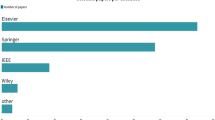Abstract
Reducing the power consumption has become one of the most important challenges in designing modern data centers due to the explosive growth of data. The traditional approaches employed to decrease the power consumption normally do not consider the power of IT devices and the power of cooling system simultaneously. In contrast to existing works, this paper proposes a power model which can minimize the overall power consumption of data centers by balancing the computing power and cooling power. Furthermore, an enhanced genetic algorithm (EGA) is designed to explore the solution space of the power model since the model is a liner programming problem. However, EGA is computing intensive and the performance gradually decreases with the growth of the problem size. Therefore, heuristic greedy sequence (HGS) is proposed to simplify the calculation by leveraging the nature of greed. In contrast to EGA, HGS can determine the workload allocation of a specific data center layout with only one calculation. Experimental results demonstrate that both the EGA and HGS can significantly reduce the power consumption of data centers in contrast to the random algorithm. Additionally, HGS significantly outperforms EGA in terms of the continuity of workload allocation and execution performance.
Similar content being viewed by others
References
Hua Y, Liu X, Feng D. Data similarity-aware computation infrastructure for the cloud. IEEE Transactions on Computers, 2014, 63(1): 3–16
Van Heddeghem W, Lambert S, Lannoo B, Colle D, Pickavet M, Demeester P. Trends in worldwide ICT electricity consumption from 2007 to 2012. Computer Communications, 2014, 50: 64–76
Barroso L A, Hölzle U. The case for energy-proportional computing. Computer, 2007, 40(12): 33–37
Weiser M, Welch B, Demers A, Shenker S. Scheduling for reduced cpu energy. Mobile Computing, 1996, 449–471
Berl A, Gelenbe E, Di Girolamo M, Giuliani G, De Meer H, Dang M Q, Pentikousis K. Energy-efficient cloud computing. The Computer Journal, 2010, 53(7): 1045–1051
Rong H G, Zhang H M, Xiao S, Li C B, Hu C H. Optimizing energy consumption for data centers. Renewable and Sustainable Energy Reviews, 2016, 58: 674–691
Sawyer R. Calculating total power requirements for data centers. White Paper, American Power Conversion, 2004
Moore J D, Chase J S, Ranganathan P, Sharma R K. Making scheduling “cool”: temperature-aware workload placement in data centers. In: Proceedings of USENIX Annual Technical Conference, General Track. 2005, 61–75
Tang Q, Gupta S K S, Varsamopoulos G. Energy-efficient thermalaware task scheduling for homogeneous high-performance computing data centers: a cyber-physical approach. IEEE Transactions on Parallel and Distributed Systems, 2008, 19(11): 1458–1472
Shamalizadeh H, Almeida L, Wan S, Amaral P, Fu S, Prabh S. Optimized thermal-aware workload distribution considering allocation constraints in data centers. In: Proceedings of IEEE Green Computing and Communications. 2013, 208–214
Kaur T, Chana I. Energy efficiency techniques in cloud computing: a survey and taxonomy. ACM Computing Surveys (CSUR), 2015, 48(2): 22
Chaudhry M T, Ling T C, Manzoor A, Hussain S A, Kim J. Thermalaware scheduling in green data centers. ACM Computing Surveys (CSUR), 2015, 47(3): 39
Pinheiro E, Bianchini R, Carrera E, Heath T. Dynamic cluster reconfiguration for power and performance. In: Proceedings of Workshop on Compilers and Operating Systems for Lowpower. 2003, 75–93
Verma A, Ahuja P, Neogi A. Power-aware dynamic placement of hpc applications. In: Proceedings of the 22nd Annual International Conference on Supercomputing. 2008, 175–184
Zhang L W, Deng Y H, Zhu W H, Zhou J P, Wang F. Skewly replicating hot data to construct a power-efficient storage cluster. Journal of Network and Computer Applications, 2015, 50: 168–179
Deng Y H. What is the future of disk drives, death or rebirth? ACM Computing Surveys (CSUR), 2011, 43(3): 23
Lin R H, Deng Y H, Yang L Y. Conserving cooling and computing power by distributing workloads in data centers. In: Proceedings of the 13th ACM International Conference on Computing Frontiers. 2016
Kansal A, Zhao F. Fine-grained energy profiling for power-aware application design. ACM SIGMETRICS Performance Evaluation Review, 2008, 36(2): 26–31
Deng Y H, Hu Y, Meng X H, Zhu Y F, Zhang Z, Han J Z. Predictively booting nodes to minimize performance degradation of a power-aware web cluster. Cluster Computing, 2014, 17(4): 1309–1322
Kantarci B, Foschini L, Corradi A, Mouftah H T. Design of energyefficient cloud systems via network and resource virtualization. International Journal of Network Management, 2015, 25(2): 75–94
Moore J, Chase J S, Ranganathan P. Weatherman: automated, online and predictive thermal mapping and management for data centers. In: Proceedings of IEEE International Conference on Autonomic Computing. 2006, 155–164
Marshall L, Bemis P. Using CFD for data center design and analysis. Applied Math Modeling White Paper, 2011
Sharma R K, Bash C E, Patel C D. Dimensionless parameters for evaluation of thermal design and performance of large-scale data centers. In: Proceedings of the 8th ASME/AIAA Joint Thermophysics and Heat Transfer Conference. 2002
Tang Q, Mukherjee T, Gupta S K, Cayton P. Sensor-based fast thermal evaluation model for energy efficient high-performance datacenters. In: Proceedings of the 4th International Conference on Intelligent Sensing and Information Processing. 2006, 203–208
Weiss B, Truong H L, Schott W, Scherer T, Lombriser C, Chevillat P. Wireless sensor network for continuously monitoring temperatures in data centers. IBM RZ, 2011
Ahmad F, Vijaykumar T. Joint optimization of idle and cooling power in data centers while maintaining response time. ACM SIGPLAN Notices, 2010, 45(3): 243–256
Lent R. Analysis of an energy proportional data center. Ad Hoc Networks, 2015, 25: 554–564
Cupertino L, Da Costa G, Oleksiak A, Pia W, Pierson J M, Salom J, Siso L, Stolf P, Sun H Y, Zilio T. Energy-efficient, thermal-aware modeling and simulation of data centers: the CoolEmAll approach and evaluation results. Ad Hoc Networks, 2015, 25: 535–553
Acknowledgements
We would like to thank the anonymous reviewers for their valuable time and constructive comments. This work was supported by the National Natural Science Foundation (NSF) of China (Grant Nos. 61572232 and 61272073), the NSF of Guangdong Province (S2013020012865), and the Fundamental Research Funds for the Central Universities.
Author information
Authors and Affiliations
Corresponding author
Additional information
Ruihong Lin is a research student at the Computer Science Department of Jinan University, China. Her current research interests cover energy-efficient computing, data center architecture, and data replication.
Yuhui Deng is a professor at the Computer Science Department of Jinan University, China. Before joining Jinan University, he worked at EMC Corporation as a senior research scientist from 2008 to 2009. He worked as a research officer at Cranfield University, UK from 2005 to 2008. He received his PhD degree in computer science from Huazhong University of Science and Technology, China in 2004. His research interests cover green computing, cloud computing, information storage, computer architecture, performance evaluation, etc.
Electronic supplementary material
Rights and permissions
About this article
Cite this article
Lin, R., Deng, Y. Allocating workload to minimize the power consumption of data centers. Front. Comput. Sci. 11, 105–118 (2017). https://doi.org/10.1007/s11704-016-6035-z
Received:
Accepted:
Published:
Issue Date:
DOI: https://doi.org/10.1007/s11704-016-6035-z




